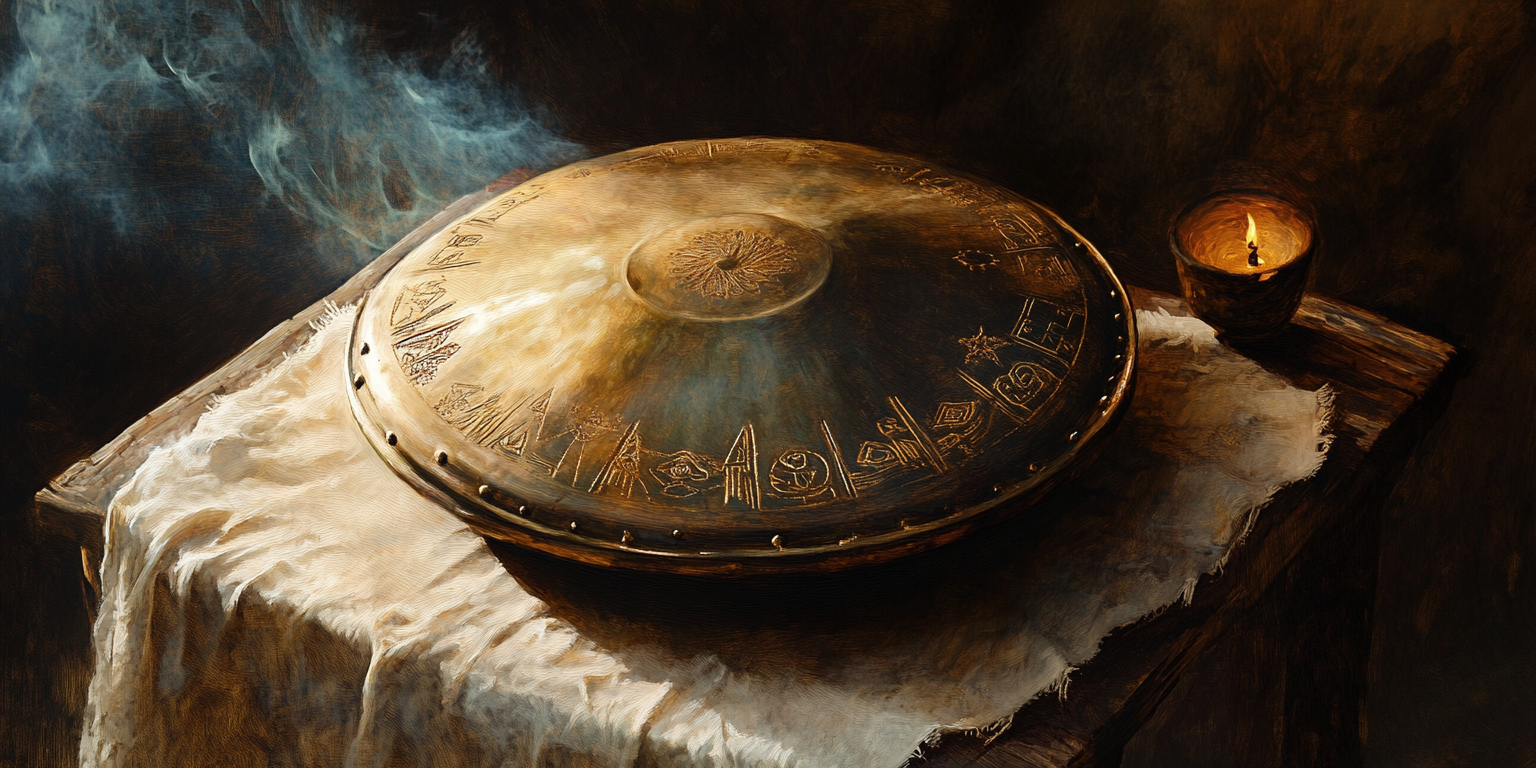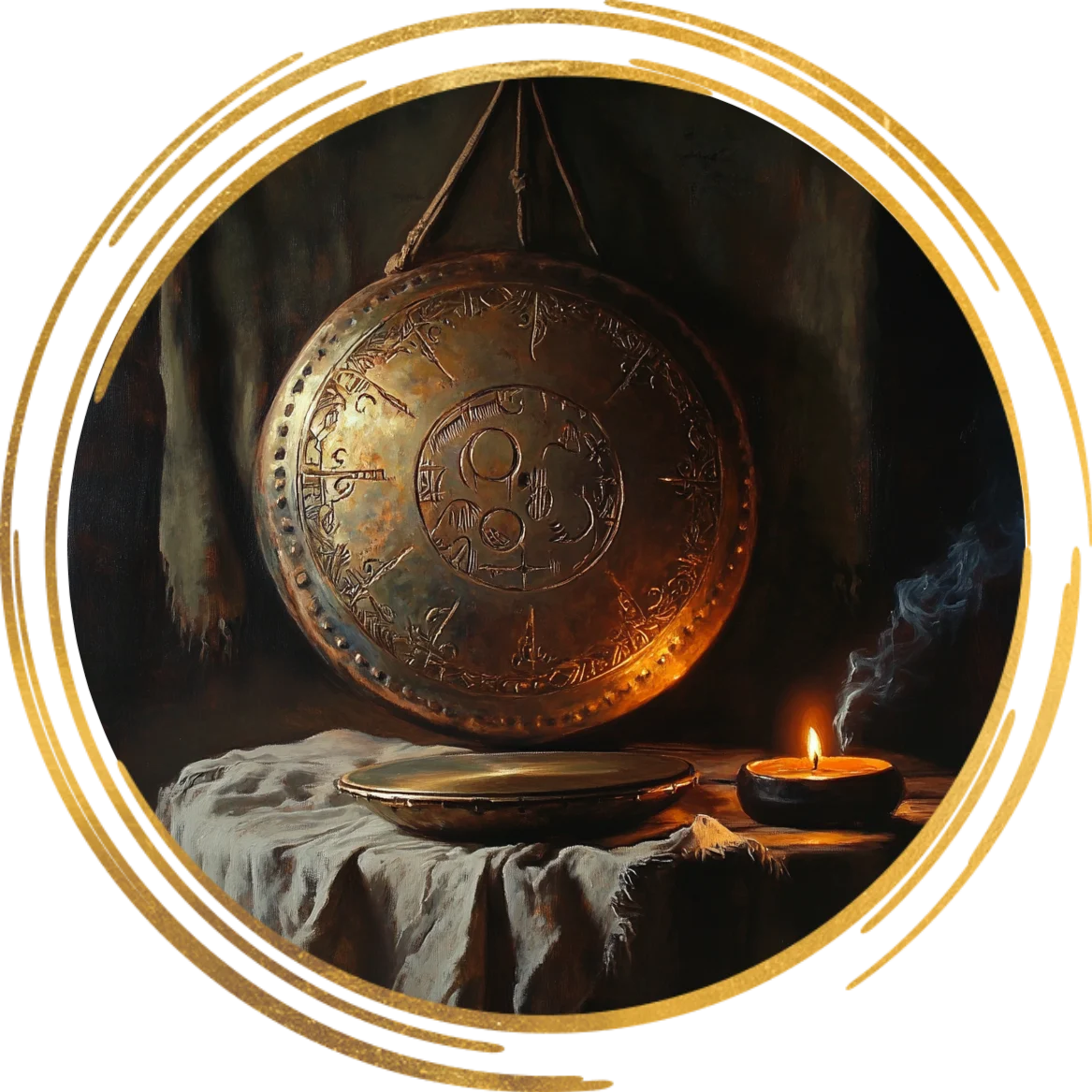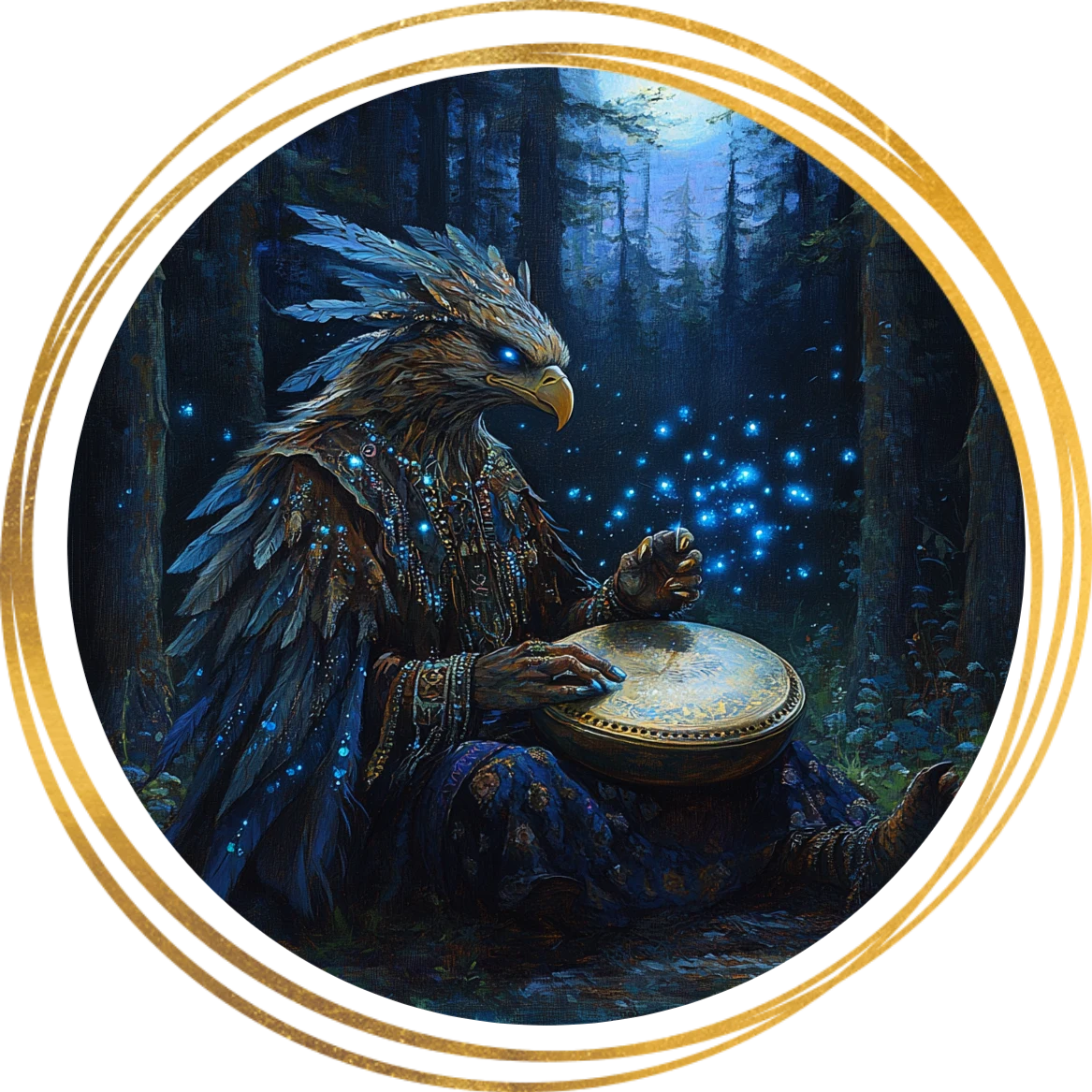Echosong
Voice of Dream and Memory
"Some instruments are played to be heard. This one is played to be felt."
Among scattered peaks and mist-veiled groves, in the isolated tribes of the Eaglors, there exists an instrument not merely heard, but remembered. Known as the echosong, it is a hollow, bell-toned sculpture shaped like an inverted dome, gently hammered and tuned by artisans whose ears are trained more to silence than sound. It sings not simply with notes, but with something deeper: an echo of dreams, regrets, longing, and quiet revelation.
To outsiders, the echosong seem like an odd curiosity; a strange looking, melodic drum or an ornamental relic. But to the Eaglors, it is a cultural cornerstone, an extension of their way of seeing the world. Their society is steeped in a reverence for the ephemeral and the ineffable. Dreams, symbols and omens are the threads that bind their stories, songs, and ceremonies together. That said, the echosong is not just another musical instrument, but a tool of interpretation: a bridge between the known past, the mutable present, and the half-seen future.
The First Echosong
Long ago, when the wind still whispered in a language the Eaglors understood, there lived Orenn, a dreamseer of no great renown. Unlike the grand oracles who called forth visions in fire or entrails, Orenn’s gift was quieter. He dreamt often, and vividly, but his dreams came with neither clarity nor comfort. He saw falling stars and silver rivers, towers of ash, wolves made of wind. And always, he awoke hollow, unable to speak the meaning of what he had seen.
Ashamed of his silence, Orenn wandered far, seeking solitude beneath the weeping stones. There, it is said, he found a fallen tree whose hollow trunk hummed beneath his hand. Each night he sat beside it, letting his fingers tap its curved surface, and in doing so, he found rhythm in his restlessness. The dreams did not cease, but began instead to harmonize with his music. Patterns emerged; sequences, pulses, truths. For the first time, he understood not the language of dreams, but their feel. Most importantly, he learned that his hands could translate them.
When he returned to his tribe, he brought not prophecy, but melody. He played, and the elders wept. No one could say exactly what his prophecies meant, but all felt like they knew. In time, others began crafting their own versions of the hollow-drum-tree, shaping metal and wood to echo that first sound. Thus, the echosong was born, not from magic, but from longing and the need to be understood.
Keepers of the Echo
Though any Eaglor may learn to play the echosong, true mastery is the province of the Skalds and the Sages.
The Skalds are the voice-keepers: musicians, poets, storytellers. They travel from place to place, echoing the histories of the people through song and rhythm. Their role is to keep memories alive, to sing the joys, the sorrows, and the lessons of the past so that the tribe may carry them forward. Skalds often compose their pieces not with ink, but with gesture and vibration, improvising around a core memory or ancestral dream. Each Skald's echosong is uniquely tuned, personalized to reflect the timbre of their own spirit.
The Sages, by contrast, are quieter. They are the ones who use the echosong as a lens through which they listen to emotions; to the rhythm of a storm, to the tension in a room. They are not prophets, but interpreters. A Sage may play their echosong in response to a troubling dream, attempting to find its shape through resonance. Sages are usually advisors of oracles and elders alike, bringing their music forward to translate the cryptic language of dreams.
Training for either path begins early. Apprentices are taught first to listen: not to music, but to silence. They must sit for hours beneath the shadow of trees, the banks of the frozen lakes or the summits of their anscestral mountains, learning to discern the music of stillness. Only then are they allowed to touch an echosong.
Occasions of Sound and Silence
The echosong is a deeply versatile instrument, used in nearly every facet of Eaglor life. While its origins lie in the interpretation of dreams, its voice now accompanies the full spectrum of experience.
Rites of Foretelling
While in modern times few Eaglors claim direct communion with prophetic forces, certain dreams are still treated with reverence. During the annual Night of the Echoing Moon, tribes gather to share their most vivid dreams beneath the starlight. A Sage or Skald plays the echosong between each tale, shaping its tone to echo the spirit of the dream.
Celebrations and Feast Days
During harvest festivals, naming ceremonies, or the return of travelers, the echosong is played in joyous, rhythmic patterns. Children dance to it; elders add layered chants. There are no formal songs, but evolving, improvised rhythms that grow organically with the crowd.
Mourning and Remembrance
The passing of an Eaglor is marked not by wailing, but by the playing of a single, sustained echosong tone; a deep, bell-like note that resonates through the settlement. Skalds then take turns weaving short melodies to honor the departed’s life and spirit.
Personal Reflection
Many Eaglors keep a small, hand-sized echosong in their homes, less refined and musical, but deeply personal. It is played in private moments, used not to create music but to create space for thought, for memory, for quiet sorrow or quiet joy.
Craft of the Echosong
Though its tones are ephemeral, the Echoesong is a physical instrument, crafted with care and artistry. It is typically made from a blend of hardened bronze or singer’s iron- a local name for a particularly resonant ore. At times, ash or colored pigments are forged into the metal to alter its tone and hue. Runes and symbols complete the instrument’s decoration, each inscribed with meanings significant to its maker.
The shell is formed into a dome, either by hand-hammering or casting with molds passed down through families. The top is then etched with tonefields, shallow indentations whose placement and depth determine pitch. These are not measured but intuitively shaped by the maker, often while listening to the wind or the breath of the trees.
Each echosong bears a sigil burned or etched on its base to reflect its maker's dream the night before its completion. These sigils are believed to subtly affect the instrument’s voice. As a result, no two echosongs are alike, and this is intentional. Just as no dream is universal, no melody should be. An echosong’s voice is meant to be personal, rooted in the soil of the one who plays it and the one who listens.
Through the voice of the Echoesong, the Eaglors remember what the world has forgotten: that truth is often a matter of resonance, not revelation. And perhaps- if you remain still when the wind holds its breath and the stars are watching- you might hear an old Skald play a note that sounds like something you once dreamed.
That is the Echoesong, and that is its gift.
All written content is original, drawn from myth, memory, and madness.
All images are generated via Midjourney using custom prompts by the author, unless otherwise stated.












Really beautiful instrument and traditions. Are the Eaglor actively preventing other species from using the Echosong? Or are they missing ... something to be able to play it correctly?
Thank you so much <3 To answer your question, no they aren't preventing others from using it, it's just that for others it doesn't hold the same significance. Eaglors are in general very secluded people, so what they safeguard is the meaning of the instrument for their culture and the ways they are using it.